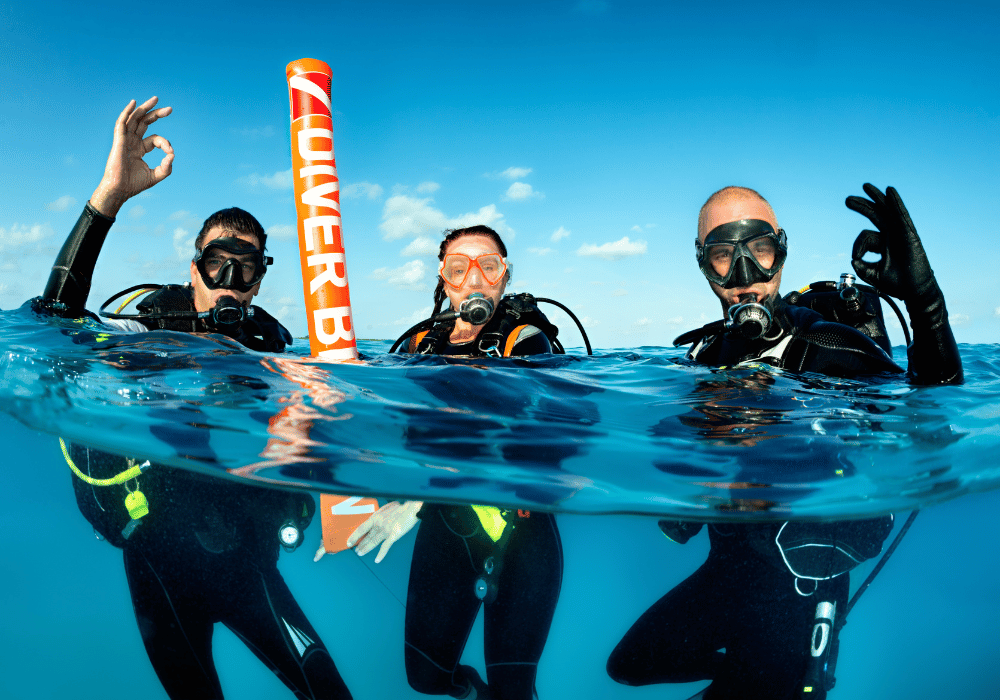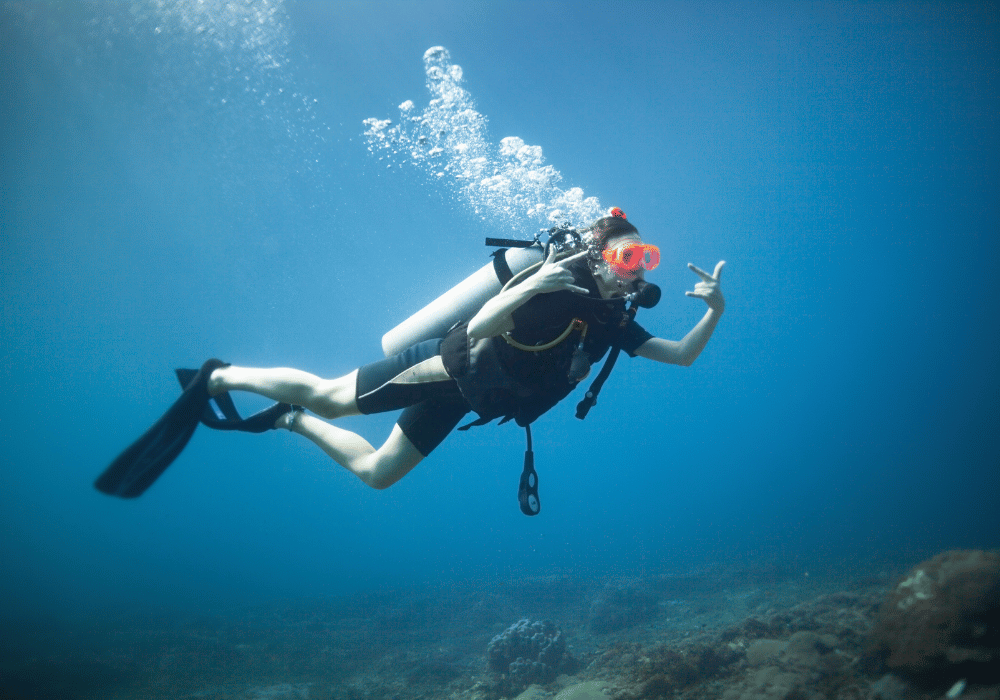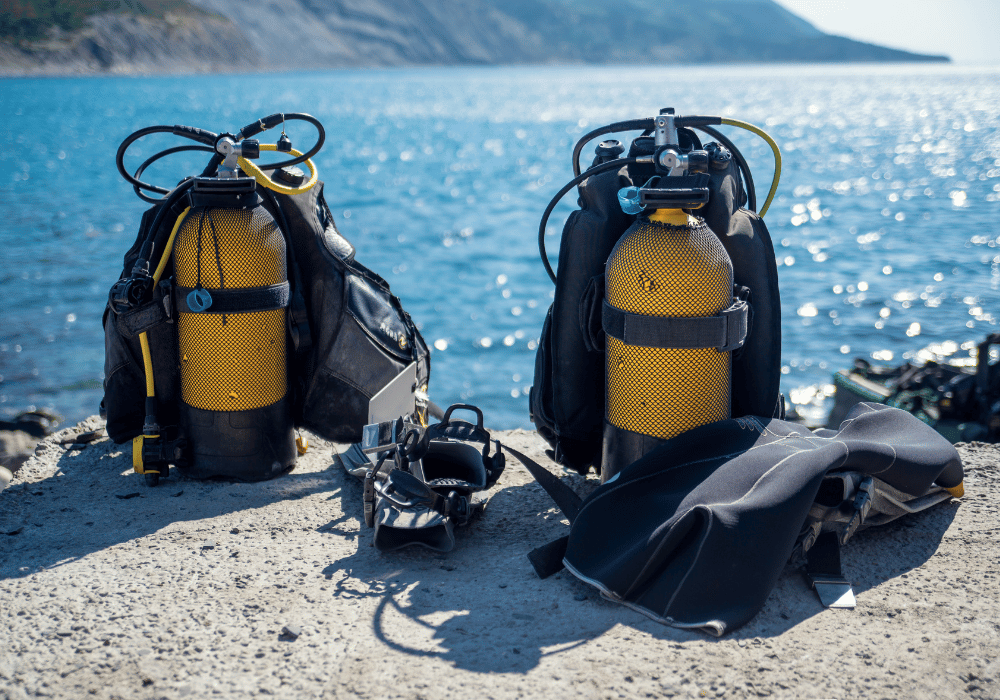Shop Online

Scuba diving is an adventure like no other. It allows you to immerse yourself in the underwater world, witnessing marine life and ecosystems that few get to experience. However, a key aspect of this incredible activity is ensuring your safety and communication while submerged. Among the array of safety measures divers rely upon, noisemakers stand out as essential tools that enhance underwater communication and awareness. These devices are practical, user-friendly, and often overlooked; yet they can significantly improve your diving experience while also keeping you and your buddy safe.
This blog will explore why noisemakers are vital for scuba divers, the types of noisemakers available, how to choose the right one, and best practices for using them effectively. Whether you’re a beginner or an advanced diver, this information is critical to your underwater safety and enjoyment.

Communication can be particularly complex when you’re underwater. Unlike on land, verbal exchange is impossible, and divers usually rely on hand signals to convey messages. While hand signals work well in proximity, their limitations become apparent in noisy environments with reduced visibility or when a diver is distracted by their surroundings. Noisemakers offer a solution by allowing divers to grab their buddy’s attention instantly, even from a distance. These audible tools are especially helpful when dealing with currents or other noise-producing factors like boat engines. The distinct sound of a noisemaker can cut through ambient underwater noise, ensuring your message gets through seamlessly.
Emergencies can strike unexpectedly during a dive, and a quick response could make the difference between an inconvenience and a life-threatening situation. A noisemaker ensures you can call for help in scenarios where shouting, waving, or even hand signals may not garner attention quickly enough. Whether it’s to signal distress, alert your partner to potential hazards, or regroup with your team after unexpected separation, having a noisemaker allows you to broadcast your need for help fast and effectively. Peace of mind is an invaluable asset during any underwater activity, and a noisemaker offers just that in moments of high stress.
Apart from emergencies, noisemakers are equally useful in non-urgent situations. One common application is signalling the boat or a surface support team after ascending to the surface. This is especially helpful when sea conditions or distance make visibility challenging. Similarly, underwater, a diver can use a noisemaker to signal their buddy or group to point out something interesting, adjust plans, or check on their condition. Instead of swimming long distances or risking miscommunication, you can easily use audible signals to keep close coordination, fostering more synchronized and enjoyable dives.
Shakers are simple and reliable noisemakers that many divers swear by. These small, compact tools often consist of a sealed container filled with a few steel balls. By shaking it, the device emits a rattling sound that can travel effectively through water. Shakers are popular because they don’t rely on batteries or compressed air to function, making them an excellent choice for divers who prefer minimalist, low-maintenance options. Additionally, shakers are lightweight and easy to carry, fitting seamlessly into most divers’ gear setups without adding unnecessary bulk.
Air horns operate by connecting to your scuba tank, using bursts of compressed air to produce loud, attention-grabbing sounds. When activated, they can emit noises that are audible both underwater and on the surface, making them highly versatile. Air horns are particularly useful in environments where divers must signal at great distances or combat high levels of background noise, such as during drift dives or in choppy surface conditions. While slightly bulkier than shakers, their effectiveness in long-range signalling makes the trade-off worthwhile for many divers.
For those seeking a modern, high-tech option, electronic noisemakers are a game-changer. These devices generate pre-programmed sounds when triggered, offering consistent, dependable audibility. Many electronic noisemakers feature multiple tone options or adjustable output levels, giving divers additional flexibility in different situations. However, it’s important to note that these devices rely on batteries, which necessitate periodic recharging or replacement. Nonetheless, their advanced functionality and adaptability make electronic noisemakers a favourite among tech-savvy divers who crave optimal performance and customization.
Your specific diving environment plays a significant role in determining the ideal noisemaker for your needs. For example, if you frequently explore murky or deep waters with poor visibility, an air horn or electronic noisemaker with a loud output may be your best choice. Conversely, relatively calm, shallow dives might only require the simplicity of a shaker. Understanding the conditions you’ll most often encounter will help ensure that your noisemaker performs optimally when needed.
When selecting a noisemaker, it’s crucial to prioritize ease of use. The best noisemaker is one that you can activate quickly and intuitively, even when wearing gloves or managing other gear. Simple designs often prove more reliable in high-stress situations, where fine motor skills may be impaired. Test your options to confirm that the device feels natural in your hands and operates smoothly during practice dives.
The effectiveness of a noisemaker depends largely on its ability to be heard over long distances and against background noise. Be sure to assess the output level and range of any device you’re considering. Divers exploring expansive areas or dealing with significant ambient noise may benefit from a noisemaker known for its high decibel levels, such as air horns. Just remember to think about your unique needs and balance them with the practicality of carrying louder, larger devices.

Having a noisemaker is only helpful if you’re confident in using it correctly. Before integrating one into your regular dives, spend time practicing its activation both on land and underwater. Get a feel for how much force is necessary to achieve the desired sound and familiarize yourself with the subtler technical aspects of the device. This preparation will ensure you use your noisemaker effortlessly and effectively in the moments that matter most.
To maximize convenience and minimize the risk of losing your noisemaker while underwater, ensure it’s securely attached to your gear. Many noisemakers feature built-in clips or straps designed for this purpose. Common attachment points include your buoyancy control device (BCD) or a D-ring. During each pre-dive check, confirm that your noisemaker is firmly in place and easily accessible.
While noisemakers are invaluable tools, they should always be used responsibly and sparingly. Overuse can disrupt marine life and intrude on the experience of fellow divers. Reserve your signals for genuine communication needs, and avoid creating unnecessary noise that could compromise the tranquil underwater environment. By exercising good judgment, you’ll contribute to a more respectful and enjoyable experience for everyone involved.
Scuba divers often say that preparation is the key to a safe and successful underwater adventure. Among the arsenal of tools you bring on every trip, a reliable noisemaker stands out as one of the simplest yet most effective ways to tackle underwater communication challenges and ensure your safety. By understanding the different types of noisemakers available, finding one that suits your specific needs, and adhering to best practices, you can significantly enhance your diving experience. Whether you’re signalling a buddy, calling for help, or alerting a surface team, noisemakers provide unparalleled peace of mind as you discover the wonders of the underwater world. Don’t take chances on your safety or your enjoyment. Equip yourself today with a noisemaker from Benthic Scuba’s trusted collection and make every descent both thrilling and secure.

We are Essex County’s only PADI 5-Star Instructor Development Center!